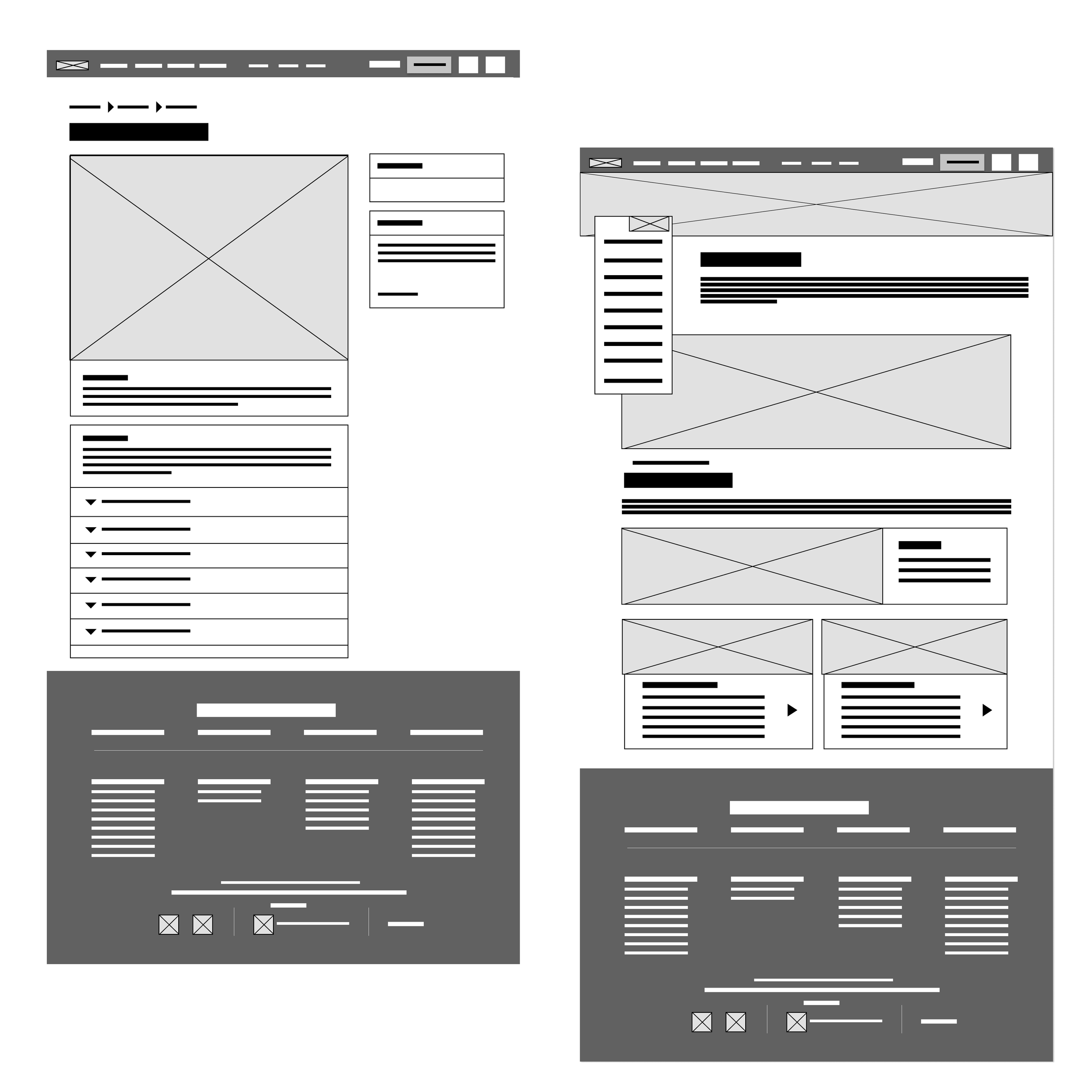
Overview
As the Senior UX Designer on the AutoZone Shopping Cart modernization project, I played a pivotal role in reimagining one of the company’s most critical e-commerce touchpoints. The goal was to enhance the shopping cart experience to increase conversion rates, improve user satisfaction, and align the interface with modern design standards. This initiative was a collaborative effort involving two additional designers, a Director of Product Design, and engineering teams both in-house and offshore.
Problem Statement
-
Poor mobile responsiveness
The poor mobile responsiveness of the interface results in a frustrating user experience, with content misalignment, inconsistent scaling, and limited functionality. Text and images often overflow their containers, requiring excessive zooming or horizontal scrolling to view critical information. Interactive elements, such as buttons or menus, are either too small to tap accurately or awkwardly positioned, hindering navigation. The lack of optimized layouts for smaller screens creates a cluttered appearance, making it difficult for users to quickly access key actions or information. This inconsistency across devices diminishes usability and overall engagement.
-
Inconsistent UI patterns throughout
Auto shopping carts exhibit inconsistent UI patterns when key interactions like adding, removing, or updating items vary across different stages of the purchase journey, leading to user confusion and friction. For example, users may encounter different button placements, labels ("Remove" vs. "Delete"), or confirmation flows between product pages, cart summaries, and checkout screens. These inconsistencies disrupt the user's mental model, increasing cognitive load and making it harder to confidently complete purchases, ultimately impacting conversion rates and customer satisfaction.
-
Low user confidence in product availability
AutoZone customers shopping online experience low confidence in item availability during the checkout process, leading to hesitation, cart abandonment, or negative perceptions of the brand's reliability. The lack of clear, consistent, and timely information on product stock levels—both for delivery and in-store pickup—creates uncertainty, especially for time-sensitive automotive needs. Addressing this issue requires enhancing availability transparency and providing reassuring signals that enable users to complete purchases with confidence.
-
High shopping cart abandonment rates
AutoZone's high cart abandonment rates indicate that customers encounter friction, uncertainty, or unmet expectations during the checkout process, preventing them from completing their purchases. Key factors contributing to abandonment may include unexpected costs, lack of trust in item availability, complex checkout flows, or limited payment options. This impacts both customer satisfaction and revenue, making it essential to identify and remove barriers, streamline the experience, and build confidence and convenience at each step of the purchase journey.
Our challenge was to address these pain points through a comprehensive UX and UI modernization effort that would prioritize ease of use, transparency, and performance across all devices.
Research & Insights
To inform our design decisions, I spearheaded user research efforts, leveraging both quantitative and qualitative methodologies:
Research
-
Heuristic Evaluation
We analyzed direct competitors in the automotive retail space, as well as best-in-class e-commerce platforms like Amazon and Walmart.
-
Benchmarking
We analyzed direct competitors in the automotive retail space, as well as best-in-class e-commerce platforms like Amazon and Walmart.
-
Analytics
Collaborated with the product team to review cart abandonment metrics, session recordings, and user behavior data.
-
Interviews
Partnered with the research team to conduct interviews with AutoZone customers, focusing on pain points during the checkout process.
Key Insights
-
Clear Visibility
Users wanted clear visibility into product availability and delivery timelines before proceeding to checkout.

-
Trust signals
Guarantees , were missing or not prominent enough. This absence left users uncertain about their purchases, contributing to hesitation in completing transactions.

-
Persistent cart summaries
The lack of persistent cart summaries made it difficult for users to keep track of items across the experience.

-
Reinforcing confidence
Clear and visible trust signals reassured users that they were making secure and reliable purchases, reinforcing confidence in the brand.
Design Strategy
Based on the research, we established the following design principles:
Transparency:
Provide upfront clarity on product availability, shipping options, and delivery estimates.
Simplicity:
Streamline the cart layout and interaction patterns for both desktop and mobile users.
Consistency:
Implement a unified design system with reusable components.
Trust:
Incorporate visual cues and messaging to reassure users at every step.
My Role & Conribution
As the Senior UX Designer, I led the overall UX strategy and execution while collaborating closely with the Director and engineering teams.
Pattern Library Development
-
Persistent cart summaries

-
Delivery options selectors

-
Inline validation forms

-
Trust signal modules
My Role & Contribution
I worked closely with front-end developers to ensure that components were not only visually consistent but also accessible and performant.
Wireframes & Prototypes
I developed low-fidelity wireframes to explore layout options and iterate quickly on structural concepts. Once validated, I created high-fidelity interactive prototypes in Figma to demonstrate the final user flo
My Role & Contribution
In my role, I acted as the primary liaison between the design, product, and engineering teams, working to ensure seamless collaboration across disciplines. By facilitating regular design reviews and feedback sessions, I was able to bridge the gap between design vision and technical feasibility. This approach ensured that design specifications were realistic and could be implemented within technical constraints. I also made sure offshore developers had detailed documentation and annotated prototypes, which helped them better understand the design intent. Through consistent communication and iterative design updates based on feedback from developers, we were able to refine and enhance the product in a way that met both user needs and technical requirements.
Results
12% decrease in cart abandonment rate
It all begins with an idea. Maybe you want to launch a business. Maybe you want to turn a hobby into something more. Or maybe you have a creative project to share with the world. Whatever it is, the way you tell your story online can make all the difference.

8% increase in mobile conversions

Improved user satisfaction scores based on post-purchase surveys

Positive stakeholder feedback on the new design system and consistency across the checkout flow
Next Steps
Building on the success of the modernization, we proposed the following next steps:
Next Steps
Expand the pattern library to cover additional e-commerce flows (e.g., Wishlist, Checkout).
Next Steps
Incorporate personalized delivery estimates based on location and inventory.
Next Steps
Introduce saved payment methods for faster checkout.
Next Steps
Implement ongoing usability testing cycles to gather feedback and refine the design.
Conclusion
The AutoZone Shopping Cart modernization project demonstrated the transformative impact of user-centered design on business outcomes. As the Senior UX Designer, I not only contributed to the visual and interactive enhancements but also championed a more collaborative and systematic approach to product design. This project underscored my passion for balancing strategic thinking with hands-on execution, ultimately delivering solutions that meet both user needs and business objectives.


